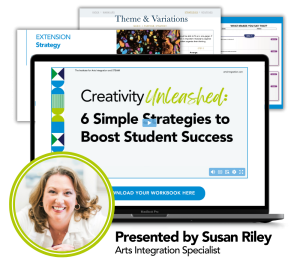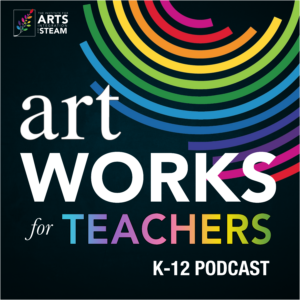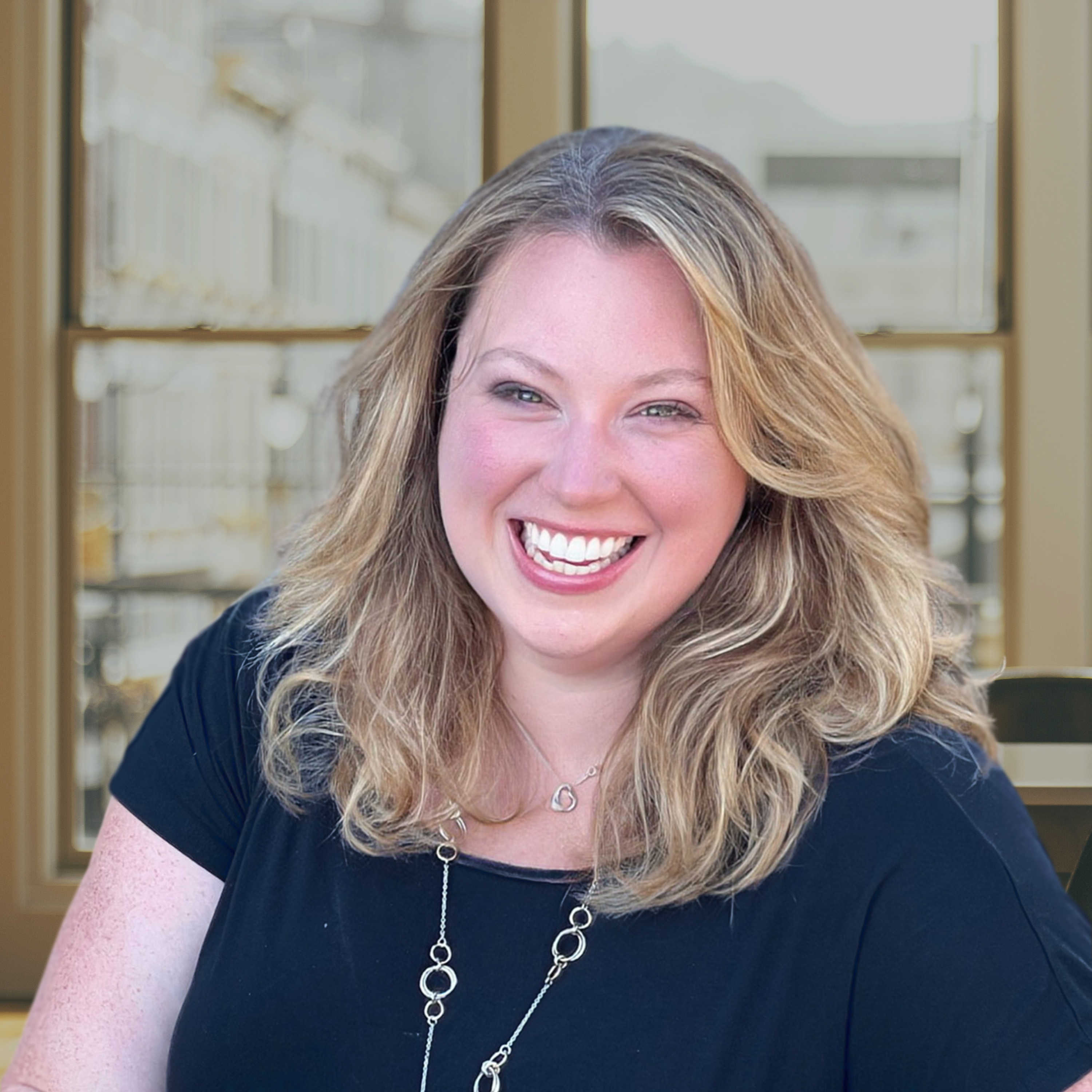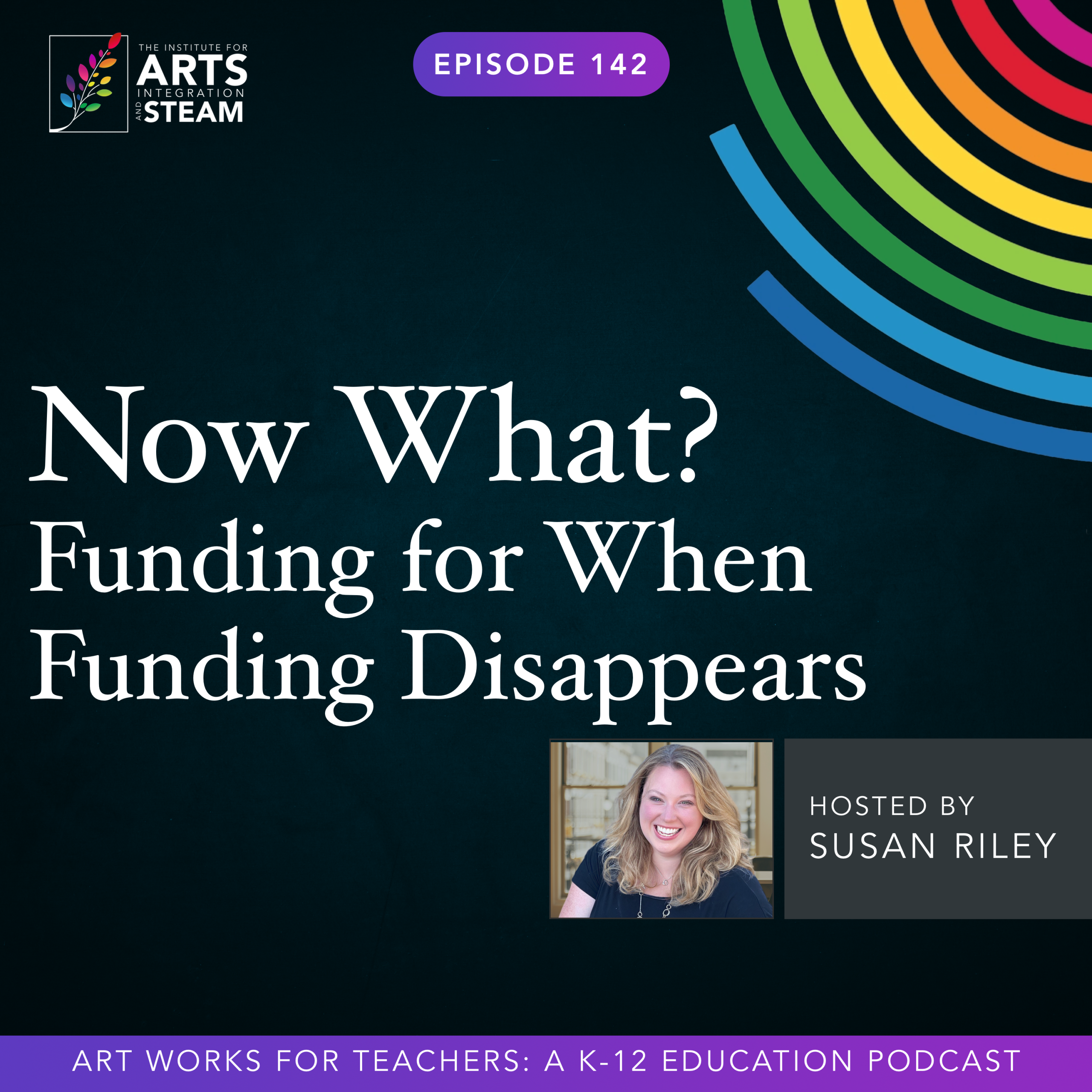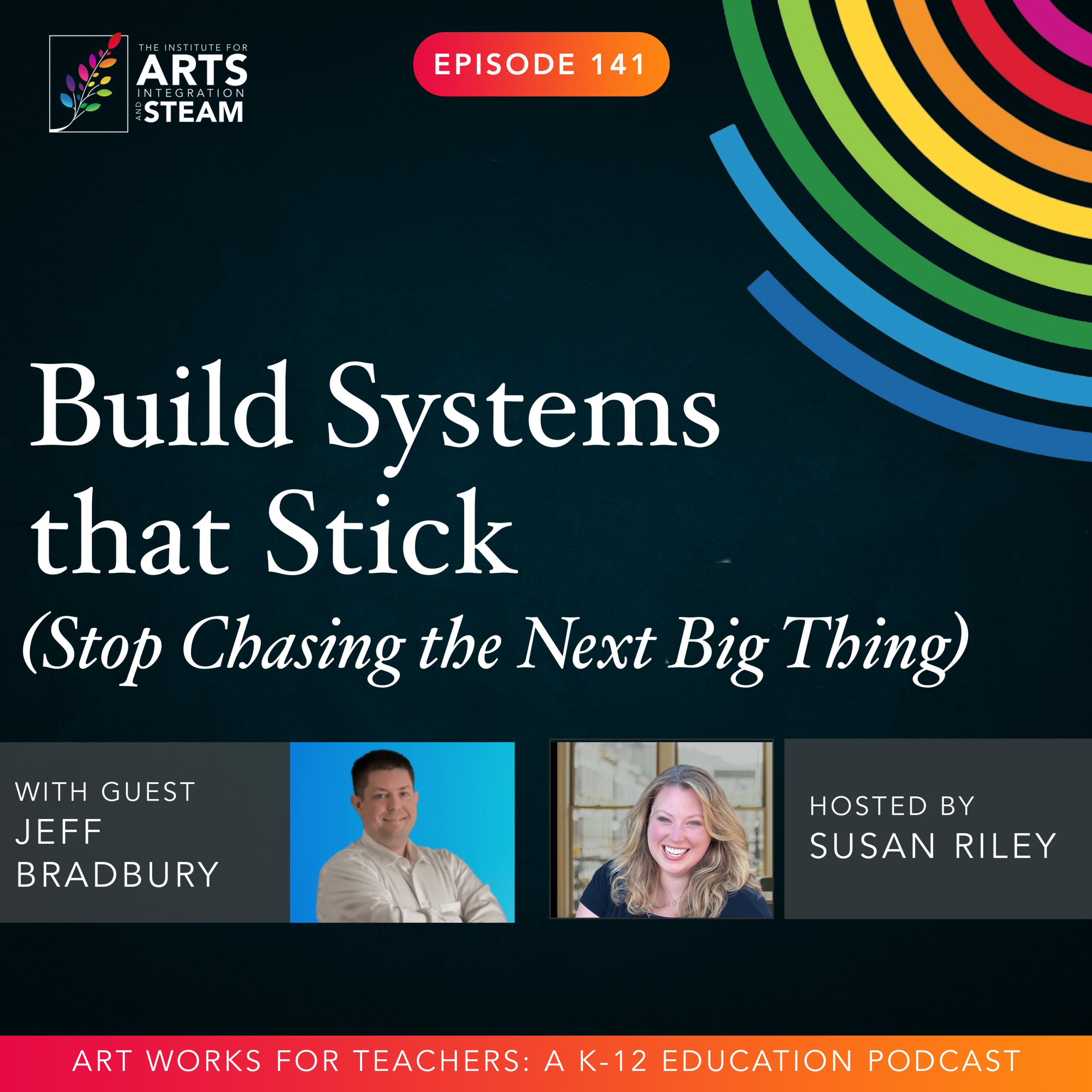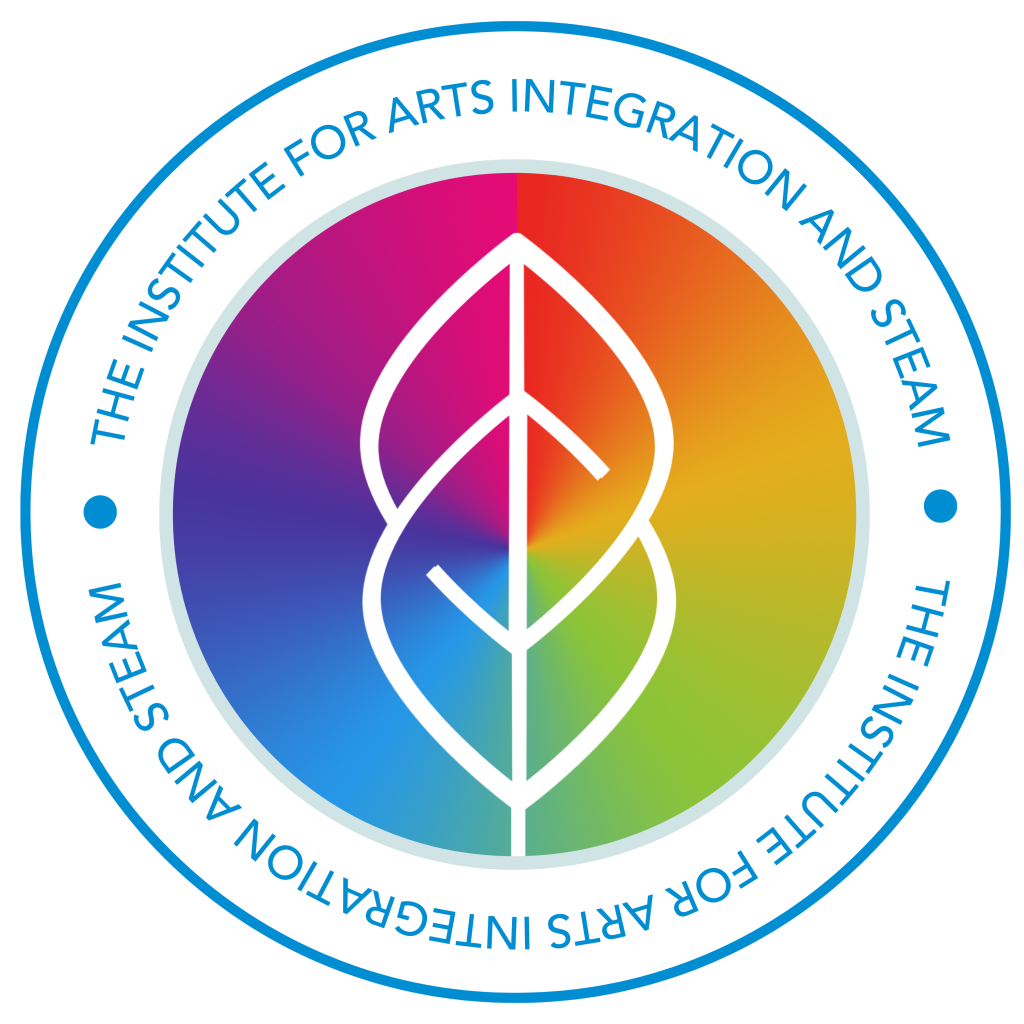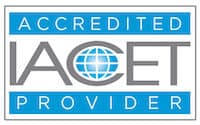ART WORKS FOR TEACHERS PODCAST | EPISODE 121 | 27:10 MIN
The Science Behind Arts Integration
Brain science is finally catching up to what great teachers have known all along—creativity is the secret to deeper learning. From those magical “aha” moments to the brain’s built-in creative cocktail, you’ll walk away with real proof that creativity isn’t just a bonus—it’s the key to better learning.
Enjoy the Six Simple Strategies to Boost Student Success free workshop.
Hello friend and welcome back to another episode of Artworks for Teachers. I’m your host, Susan Riley. And today we’re gonna be diving into the science behind arts integration, why it works, what’s actually going on under the hood, so that I think we can all better understand why we should even be considering using this approach. And it gives us some really great evidence to be able to share with others who are skeptical.
Now a couple of caveats. One, I apologize if my voice is a little more scratchy today than normal. I’m just recovering from a pretty bad head cold. Welcome to winter in Maryland. So I appreciate your grace as my voice. It might get a little hoarse here and there, but I felt like it’s such an important episode. I didn’t want to wait to record it. And number two, I’m going to be talking a lot about different components of the brain, the science behind why this is working in our brain, what’s actually happening. And I don’t want to get this material incorrect or misstate anything. So for some of this episode, if you’re watching me over video, I’m going to actually be reading from the very specific notes that I have written to be able to explain this in a way that’s not over all of our heads. I’ve had to dive into a lot of research over the last couple of weeks for this episode.
And I really want to make it tangible and relatable for all of us. And so in order for me to do that with as much integrity as possible, please forgive me if you’re watching and you see me reading. just I promise that I’m only doing that to ensure the very best quality of information possible. So with those couple of things in mind, we’re going to dive in. So the reason I want to start thinking about this is because I know we’ve all had those moments in our classrooms where you’re using a creative activity or you might have just like gotten to your wits end and you’re like you know what I’m just our students are just not engaged today I’m just gonna give them this creative moment and then suddenly the light bulbs start to go off and they really start to light up and we see this joy emerge right and they’re learning but they’re also creating and playing we’ve all seen this happen and it’s one of honestly the highlights of teaching and we all want more of that right but I think we get stuck thinking that we can’t do this in our regular curriculum and that is where arts integration comes in right arts integration isn’t an add-on it’s a mix in and so it’s a way that we can weave those creative experiences into our regular curriculum so that students have these light bulb moments as often as possible. Because as it turns out, there is actual science behind the reactions that our students have. And that’s what we’re going to dive into today. So as we get started, I want you to think about your brain like it’s a city at night. Some neighborhoods are buzzing and others are really quiet. So during creative episodes, during arts integration, when we’re using this approach in our classroom. This pattern that our brain typically is in, where one side is buzzing or one area is buzzing and other areas is quiet, this pattern actually shifts in really fascinating ways. So recent Neuros imaging studies by Roger Beattie and the colleagues at Harvard University back in 2018 revealed that highly creative people show a unique pattern of neural activity.
The brains are actually better at activating multiple networks simultaneously that typically work separately. And this is not just dedicated to those creative types, right? There is no such thing as a creative type. We are all creative people. It’s a matter of diving into those practices, finding what activates, what creative activity or medium us the most and then tapping into that so that we can then involve all areas of our brain. So here’s how the brain actually responds when we start using creative approaches in our classroom or providing creative experiences. So this is both arts integration and Arts for Art’s Sake. Anytime that you are activating your creative muscle, okay, this is what’s happening. It’s true magic because these two distinct areas, these neighborhoods in our brains that typically light up separately are called the executive control network. And that’s ECN for short, or the default mode network, DMN for short. Okay. So for years, scientists thought that these two networks were opposed to each other, right? That they only one lit up at a time and the other one was quiet. So like you were either focusing, which is an executive task, right? You were either focused or you were daydreaming. That would be a default network, right? Default mode network. But you weren’t doing both. And as teachers, the first time I saw that information, I was like, we teachers know that that is not the case because students are students who come to us with ADHD or who come to us with some special needs or who come to us with different languages, we know that oftentimes those two modes are happening simultaneously, right? So the research that came out in 2020 out of the University of Pennsylvania actually showed something really fascinating that as we engage in creative experiences, we develop stronger connections between these networks. We actually start to see these networks start to synchronize, right? So here’s what’s happening. During a creative episode or anytime we’re engaging in creative experiences, either arts for arts sake, arts integration, any kind of creative episode that we might be exploring, our brain actually shifts in really remarkable ways.
So in 2022, there was a study out of neuroscience letters that found that these kinds of tasks trigger increases in both our alpha waves and our theta waves. So alpha waves are associated with relaxed alertness, right? So that’s when we’re focused, but we’re not like stressed about it. So that creates what scientists call a neural inhibition state.
That’s essentially quieting the parts of your brain that might interfere with creative thinking. kind of, it dulls them a little bit, just keeps them quiet so that your creative thinking can get to work, right? Meanwhile, at the same time, theta waves, which are linked to deep meditation and memory integration. If you’ve ever been in a meditative state or practice meditation, I am sure you’ve heard of theta waves, right?
Theta waves are typically linked to that deep meditative state. They are helping to forge new connections between previously unrelated ideas. And this is where the magic is happening. So your alpha waves are allowing you to be in this creative state and experience this creative activity. And at the same time, your brain is building new networks, new ideas and connections. between ideas. So this is why, like, if you engage in singing in a choir or you love to use watercolor and paint and that helps you to relax, when you do those things and then you hop into the shower the next morning, boom, you might have a brilliant idea for something that you have been pondering for a while but the connections never seem to work. That’s because your brain had the opportunity to work on that in the background.
while you were engaging in your creative task. This is huge. And if you think about it for our classrooms, when you’re engaging with creative experiences, you are activating that connection network, those theta waves, and it’s happening below the surface. We don’t even know that it’s happening, but it’s building that long-term connections between previously unrelated ideas.
That’s why when we start to use Arts Integration, we connect music and math or theater and reading. That’s why students have such success and long term we see better results out of those content areas because our students have actually in the background of their brains having this connection happen. Okay, so when you’re using Arts Integration and somebody comes in and they’re like,
You’re just playing or why are you wasting time with using, focusing on this art project during your reading block, right? This happens a lot. You might even hear this from your community members or parents. Like, why are you wasting time using visual art during your reading block? Because you’re not wasting the time. You’re actually maximizing your time. You’re actually making that time count for double because your brain is working on two different levels. Now, neurochemistry during these creative moments is also fascinating. Your brain releases what scientists call the creative cocktail. I love that. This is called the creative cocktail. So when you’re working either in the arts on their own or with arts integration and you’re utilizing creativity, your brain releases this creative cocktail.
I apologize if some of these terms, if I mispronounce them, they are very scientific. So here we go. It releases these four different items. First is dopamine, and that’s going to enhance your pattern recognition and motivation.
So if we’re working in math and we’re connecting with music, you’re automatically going to release some dopamine to enhance that pattern recognition area and you’re motivating students. It’s a win-win. At the same time, norepinephrine is increasing, which is sharpening your focus and your attention. So students are not just engaged in learning. They are actually focused and more attentive.
Additionally, the same time, endorphins are creating a sense of well-being that is keeping you engaged long term. So it’s not just the spark, but it’s that endorphin that keeps you engaged throughout the entirety of the project.
And then there’s an anondamine, which is nicknamed the BLISS molecule. And this helps to forge new neural connections. So when you’re engaged in creative experiences, including arts integration, then these four different things are being released into your brain at the same time. That’s why we get such a big bang for our buck when we’re using arts integration in the classroom. So when students are engaging in arts integration,
They are engaged, they’re clearly engaged and motivated to keep working in the project, right? And with schools who are seeing a drop in student attendance because kids just don’t care, this is an immediate impact. It welcomes them in, it brings them in, and they love coming to school. Because during these creative episodes, they are engaged. They’re also fully focused. And their attention is on the project itself. And…
They’re staying engaged long term while at the same time having this bliss molecule that is creating these new connections so that after the project, when it’s over, they’re retaining their information and more than just retention, they’re able to apply it in new and different ways, right? This is huge when it comes to getting students to increase their work and their understanding of real-world applications. Think about the possibilities here with project-based learning as well and being able to apply these things long-term. It’s amazing. now scientists have also found that the most creative solutions emerge when people experience a very specific sequence. So first, there’s the dopamine spike for motivation and then it’s followed by that steady norepinephrine levels for focus. this is the dopamine hits first, then the norepinephrine to keep your focus, and then finally that endorphin release that has helped to solidify those new neural connections. That’s the process that makes us the very best at being able to apply this for later information. So during this, these creative episodes, left and right brain hemispheres, sorry, the left and right hemispheres of your brain are also collaborating more efficiently and effectively. Okay, so you’re maximizing their connection and work at the same time. So this whole old notion of being left brain, logical finger or right brain, a creative finger has really been debunked. That no longer is true, it never was true. It’s been proven that that is not correct. instead, creativity actually emerges from a dynamic collaboration between those hemispheres. So in 2023, a study in Nature Neuroscience used split brain imaging to show that the most creative solutions to problems actually emerge when both hemispheres were actively communicating together. So what makes this really interesting is how the hemispheric collaboration changes based on the creative task. So first of all, let’s back up a minute.
Because these two hemispheres are working together, when that happens and your brain is on fire, essentially, right? It’s not just different neighborhoods at different times. Now all the neighborhood lights are on, right? And they are working together. That is when we create some of the most revolutionary solutions to our problems. And when we’re working with students in this 21st century where we have no idea what kind of jobs they’re gonna be getting, what kind of the world they’re gonna have, what the opportunities are going to be for them when they leave our classrooms. The reality of the situation is from the time they start kindergarten to the time they leave high school, the world will be completely different and they will have different opportunities. It’s just the speed of change that we’re seeing. In order for them to survive, not just thrive in a new economy and in a new world when they leave us, but to survive. They have to be able to come up with creative solutions to problems that don’t currently exist. This kind of activity, these kinds of arts integration, know, methods of being able to use this in your classroom, actually allow our students to leave us with the capability of being able to work creatively through those problems and to be able to survive and thrive in a future we can’t yet see. So anyway, as we’re working through these kinds of hemispheric collaborations, if we know what creative tasks are going to be best for that, we can optimize our learning environments and our curriculum and how we teach to be able to utilize those tasks. So when you’re in the early stages of creativity,
When you’re generating new ideas, the right hemisphere actually shows more activity, particularly in the areas associated with novel connections and holistic thinking. But as you move into refining those ideas, the left hemisphere becomes more active, helping structure and articulate your creative insights. So it’s not one or the other, right? And oftentimes, arts for art’s sake and arts integration are pitted against each other.
But actually, you have to have both. You have to be able to generate those new creative ideas. You have to be able to experience what that creative process is like. And then you have to have an opportunity to apply it. And sometimes that can happen together. So think of it like a symphony orchestra. Most of the time, your analytical brain, the conductor, right, tries to rigidly control everything that’s happening. But
In your optimal creative states, when we can really maximize this knowledge about creativity, the conductor actually steps back and it allows for the musicians, which are your neural networks, both your executive functions and your default mode network, it allows those two musicians, all your networks, to play in perfect harmony with one another. That’s what neuroscience call transient hypofrontality, right? So all that means is that it’s a temporary quieting of your brain’s executive control centers that allows for more spontaneous and novel connections to emerge, right? So when we start to utilize this, here’s the things that we start to see. So when you start to put arts integration into your practice, right? We see higher retention and comprehension.
Studies all over the place show that storytelling, music, and movement help students retain information longer. And it doesn’t have to be full arts integration. It can be arts enhancement. For example, there are studies that show that using music to teach multiplication tables has been found to increase recall by up to 50%. I’m sorry, I’ll use music all day long in math class if that helps my students retain that information at such a high rate.
Additionally, engaging in arts integration, arts experiences build stronger critical thinking and problem solving. So when you’re engaging the brain in this way, it’s encouraging that higher order thinking, which help make students make connections between concepts. we don’t live in a world of isolation. We don’t learn how to read in isolation. We think that just going to reading class is the the thing that’s going to help us learn how to read. But actually, learning how to read is very complex and it doesn’t happen in one location. It’s happening in that location. It’s also happening when we’re learning how to read music notes and we’re learning how to look at a piece of artwork and read how the artist created that artwork. All of that is reading. And by leveraging creativity, we’re engaging our brain in making those connections in the background in real time.
Okay? And additionally, it improves our emotional and social learning skills. So drama and visual arts improve empathy, collaboration, and communication, all skills that our students definitely need in the 21st century. Now, one thing I want to leave you with before we head out is this idea of neuroplasticity, which is also extremely important. Okay? When we engage in arts integration and creative practice.
We’re not just getting better at one skill, not one specific skill, right? We are enhancing our overall capacity for creative thinking. Okay? So when you’re doing this, it’s not that you can only be, only creative people can do this, right? Everyone can do this. Everyone has access to this in their brains. It’s a matter of us taking the opportunity to turn it on which means providing creative experiences. So for example, musicians who learn improvisation show enhanced problem solving abilities in non-musical areas. Visual artists develop stronger observational skills that extend beyond their artwork and build into how they look at science or even social studies and the events happening of today. Writers often report improved emotional intelligence and empathy after they’ve had a writing session. Dancers demonstrate better cognitive flexibility in everyday tasks. So anytime we’re engaging in the arts in any area, you are building these skills in collaboration with one another. And what’s really remarkable is that our brains can rewire themselves to build and accept and welcome these creative experiences.
Our brains are not static, okay? They build and recreate and rewire all the time. So every time that we engage in creative activities, we’re not just producing something new. We are physically reshaping our neural pathways. It’s like building new highways in the vast network of our minds. And the more we travel those roads, the stronger they become. So,
I hope that in this episode, you’ve been able to kind of understand a little bit more about all of the magic that’s happening inside of our brains when we’re engaging in creative experiences. And I also hope that this gives you the impetus to try to use a creative strategy in your classroom this week. Maybe it’s not a full arts integration lesson. Maybe it’s just simply using the headline strategy to capture what students are thinking about a really captivating image or an illustration in their science textbook or a understanding something that they just read as when we’re looking for comprehension and analysis. You can use the headline strategy to ask students to capture the overall essence of whatever that was that they read or they looked at or they heard in six words or less. Something as simple as that strategy can be the gateway to opening up creative experiences in your classroom. If you need help with that, we do have a brand new online workshop. It’s one hour and you get a PD certificate for that hour at artsintegration.com forward slash six strategies. It’s completely free because we want you to have strategies like this to engage your learners and engage their brains. So definitely go and check that out and we’ll put a link to it in today’s show notes. Listen, creativity is not just an extra. It is the secret ingredient to deeper learning as science now proves. Thank you so much for tuning in this week. I’ll be back for another episode of Artworks for Teachers next week. See you then.

